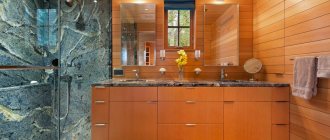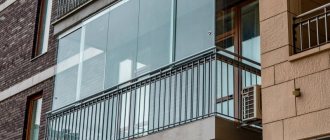During the construction or renovation of any building, a large amount of work falls on the share of sealing, sealing and moisture insulation of structural elements. For these purposes, special materials are used - sealants.
For indoor and outdoor work, it is advisable to use compounds with different sets of properties.
For indoor use, the composition must first of all be safe; the sealant for outdoor use must be frost-resistant and water-resistant.
What other requirements must sealants meet for outdoor use? What types of such sealants exist? What are their main pros and cons?
You will find answers to these questions below.
Requirements for sealants for external use
Sealants intended for external use are subject to special requirements.
One of the main requirements for sealants for outdoor work is resistance to UV rays. Materials that do not have this property are destroyed by sunlight and cease to perform their functions of sealing, compacting and gluing.
Since most of Russia is characterized by severe winters, the materials used for the construction, decoration and repair of buildings and structures must withstand low temperatures. Therefore, frost-resistant sealant should be used for exterior work.
In the middle and southern latitudes there are often hot, dry summers. At the same time, in sunny areas, buildings can heat up to very high temperatures. Sealants used for exterior work must withstand such heat and not dry out, crack, or leak from the seams being sealed.
Exposure to atmospheric moisture, rain, snow, frost, and dew can lead to the destruction of conventional sealants, so materials for outdoor work must be moisture-resistant and not washed out with water.
Under the influence of temperature changes, building materials change their linear dimensions. If the materials being joined are dissimilar, then they will change their dimensions differently, causing deformation of the seam. In order for the seam to be of high quality and retain its sealing properties for a long time, sealing compounds must have excellent adhesion to the surfaces being bonded and good elasticity.
Work on sealing seams outside the premises is characterized by high labor costs and is not carried out so often. Therefore, sealants used for external seams must retain their properties over a long service life (15-20 years or more).
The presence of harmful emissions for sealants used in exterior finishing of buildings is not of such paramount importance as for materials indoors. However, for those who care about the environmental component, it is necessary to select materials that are safe from this point of view.
Peculiarities
Many people are interested in what advantages sealants have for external use and why they are so useful compared to conventional compounds. All thanks to the following characteristics:
- Good elasticity. A very important property, since it allows you to fill all the cracks and cracks and at the same time keep the sealant inside the cavity.
- High strength. This feature is necessary for those objects that are constantly exposed to external factors leading to shifts and displacement. For example, this could be either increased vibration or seismic activity.
- Resistance to sudden changes in external temperatures. This is one of the key properties of external sealants, since otherwise the seal will lose its properties.
- Excellent adhesion. These compounds adhere perfectly to different surfaces, not only rough, but also smooth, which greatly simplifies working with them.
Another important advantage is frost resistance. Such sealants are perfect for the harsh domestic climate, since they do not lose the properties listed above even at -35... -60 degrees Celsius (depending on the manufacturer).
It should be noted that modern sealants are excellent for sealing a wide variety of materials, including:
- brickwork;
- concrete blocks;
- wooden buildings.
Thanks to this, frost-resistant sealant is widely used in both large and low-rise construction.
Silicone sealant for exterior use
Silicone sealants are one of the most versatile and most popular compositions for sealing joints on the outside of buildings. These materials are based on organosilicon compounds and have properties that make them suitable for most applications.
They create an elastic seam, work in a wide temperature range, and are resistant to water, moisture, and dampness. Silicone sealant is a frost-resistant composition. It is characterized by good adhesion to many construction materials.
When choosing silicone sealant as a material for exterior work, it should be taken into account that it can be neutral or acidic according to the type of curing. If the former do not form any substances during the polymerization process and have no odor, then the latter emit acetic acid vapors and have a characteristic odor.
Although the odor subsequently dissipates, during curing such a sealant can react with non-ferrous metals, marble, and some cementitious materials containing alkaline compounds.
Silicone sealants cure when exposed to atmospheric moisture. The process begins at the surface of the seam and spreads deeper. The curing speed is highly dependent on both air humidity and ambient temperature. On average, the polymerization rate is 2-3 mm per day.
The general disadvantages of silicone compounds include the impossibility of painting them (but there are compositions of various colors on sale), the impossibility of restoring the seam area (the seam is removed entirely and filled again) and insufficient adhesion to porous materials (concrete, plaster).
Consumption
Now let's talk about how much sealant is needed to carry out certain work. About 6 mm of product is required per meter of seam, but it must be taken into account that this is an average figure. Actual consumption depends on a number of factors:
- depth and width of the gap;
- type of building materials, etc.
If you have to seal a large gap, then in order to save money, it is recommended to use a special silicone cord. It is first placed into the cavity and then completely sealed with sealant.
If you need to process a small surface, for example, a window opening, one 300 g tube will be enough, but you also need to take into account the width of the gap between the frame and the wall.
Table of sealant consumption relative to the depth and width of the seam
Acrylic sealant
Acrylic sealants are environmentally friendly compounds designed to seal joints and seams. Unlike other types of sealants, acrylic ones are characterized by good vapor permeability. For this reason, they are very popular when sealing wooden structures.
Acrylic sealants can be moisture resistant. Such materials can retain their properties even in conditions of high humidity. However, prolonged direct exposure to water is undesirable.
Most acrylic sealants can be used for exterior applications, but you should make sure that the manufacturer specifically states that this can be used. If there is no such mark on the packaging, then most likely the composition is not frost-resistant and will harden and crack under the influence of negative temperatures.
The main advantages of acrylic sealants for exterior use are the following:
- Resistance to sunlight
- Good adhesion to wood, concrete, stone, brick, metal, glass and other surfaces
- Possibility of subsequent painting and machining
- Possibility of restoring a damaged seam with a similar sealant
- Ease of use
- Fire safety
- Low cost
On average, acrylic compositions are characterized by frost resistance down to -40 °C.
Acrylic sealants are used to seal door and window openings, fill wall cracks, and seal seams in log houses and other wooden structures.
Types of sealants and their advantages
Today you can see an abundance of formulations in stores, but each of them, in turn, has its own pros and cons.
We emphasize that the pricing policy for this product on the market is very wide, so you can easily and without any effort find a frost-resistant and water-resistant product that is affordable for your wallet.
There are five main types of frost-resistant sealants worthy of attention, and we will tell you about them in detail.
Polyurethane
Some consumers prefer polyurethane sealants - these materials have appeared recently, are manufactured using modern technologies and have good performance properties.
They create elastic connections and are characterized by high water resistance, resistance to UV radiation, and wear resistance. Polyurethane sealants can withstand prolonged exposure to both high and low temperatures (down to -60 °C), including direct contact with water. They exhibit minimal shrinkage after curing.
There are one-component compositions that require atmospheric moisture to start the polymerization process, and two-component ones. These compounds begin to harden when the components are mixed. The curing speed depends little on external factors and is regulated by the proportion of components.
The scope of application of polyurethane sealants is unusually wide. They are used for sealing door and window openings, interpanel seams, for waterproofing roofs or foundations, for sealing and connecting elements of wooden structures, etc.
The service life of polyurethane-based compounds is more than 20 years.
Where are seals used?
Such waterproof and frost-resistant sealants are used to prepare a structure for the onset of cold weather.
To get good results, experts recommend using the above sealants in non-rainy weather, even though most of them are used when it is humid outside.
Typically, frost-resistant sealants are used in the construction of residential buildings, cottages, shopping or business centers, workshops or hangars, engineering systems, etc.
To prevent drafts, these types of seals are often used to seal window openings and seams between panels. Also, it is impossible to do without them when waterproofing concrete structures and in roofing work.
Since frost-resistant sealants have high adhesion, they are well suited for structures made of any materials.
Using such waterproof and frost-resistant products, you can fill the vacuum without much difficulty, while the seam will help fill voids, tighten the edges and prevent deformations.
It is not surprising that such sealants are used even in agriculture, because thanks to them it is possible to avoid the appearance of cold in the greenhouse.
Rubber sealant for external use
Rubber sealants are produced on the basis of synthetic oligomers and elastomers. In addition to rubber, their composition may also include other materials - fibers, resins, solvents, bitumen, etc.
Rubber-based compounds, after polymerization, resemble rubber in consistency. They form a strong elastic barrier and adhere well to substrates such as stone, brick, wood, concrete, glass, ceramics, and copper. This composition is also widely used as a roofing sealant when working with various materials.
The use of rubber sealant as a roofing material is facilitated by a set of its operational characteristics.
Rubber sealants are resistant to atmospheric factors - they protect against corrosion, are not afraid of water and sunlight, and can withstand frosts down to -50 °C. After the seams have cured, they can be painted with façade paints.
Unlike most types of other sealants, rubber compounds can be applied even to a wet surface.
Their service life is 15-20 years.
Methods of use
If we talk about operating technology, then in fact it is elementary and known to everyone who has dealt with sealants and knows their specifics.
First of all, you need to have a special construction gun on your farm (for example, pneumatic, electric, mechanical, etc.).
To ensure that the seam is not too thin or thick, distribute the sealant evenly. To fill the gap, the nozzle of the nozzle must be placed in its hole, and then, moving along the entire length of the cavity, gradually squeeze out the contents.
Such waterproof products do not tolerate slow work, since polymerization of some of them occurs very quickly.
Experts do not recommend straightening the seam manually, because the waterproof product may remain on the skin, and getting rid of its traces is very difficult.
Bituminous
Compositions made from bitumen are perhaps the oldest insulating materials known to mankind. This roofing sealant is used to install and repair various damage to metal roofs and rolled roofing materials.
Modern sealants are made from purified bitumen resin and additional components. Despite their simple composition, such materials protect metal roofing elements well from corrosion and create an excellent barrier against the penetration of water and moisture. They are easy to use, do not require preliminary surface preparation before use, and cure quickly.
Using bitumen sealant, you can treat large areas in a very short time, waterproof foundations, drainage systems, etc.
In addition to the listed advantages, bitumen sealant has a number of other advantages, including the following:
- High adhesion to various roofing materials
- Frost resistance
- High elasticity
- UV resistance
- Prevents the formation of mold and mildew even in high humidity conditions
One of the disadvantages is the impossibility of coloring after application.
Varieties
Sealants are divided not only by type of work: for external or internal, but also by the active substance included in the composition.
Silicone
The most popular sealant on the building materials market is silicone. The material contains silicone rubber compounds, which have universal properties and are suitable for use in external seams. The main parameters due to which silicone sealant has gained popularity are high elasticity, resistance to water ingress and temperature changes. The composition tolerates low temperatures well, does not collapse and maintains adhesion to wood.
The disadvantages of silicone rubber-based sealant include the inability to replace only part of the seam. If for some reason a crack or other flaw forms on the seam, the entire seam will have to be removed and the material reapplied.
In addition, this type of sealant cannot be painted. If during the work it is necessary to give the material a different shade, then the dyes will not remain on the silicone material. Silicone sealant has a low degree of adhesion to materials that have a porous structure. If the seam is planned to be laid on concrete or plaster, then there is a high probability of poor adhesion to the surface.
Acrylic
In acrylic sealant, acrylic polymers are used as the active substance. This type of sealant is safe for people and the environment and does not emit harmful fumes. Acrylic material is often chosen for sealing seams and joints in wooden structures, since acrylic polymer-based sealant has a high level of vapor transmission.
The sealant is moisture resistant, but for its full functioning it is advisable to keep the seam dry for 24 hours without exposure to water. Although the composition can retain its strength for a long time under wet conditions, it is not advisable for the material to be exposed to water directly.
Acrylic sealant for external woodwork is resistant to UV rays; if the seam is defective, the damaged part of the seam can be restored. If necessary, the sealant can be colored in the required color.
Polyurethane
Polyurethane sealant appeared on the building materials market relatively recently, but quickly became popular. Positive qualities of this material:
- resistance to water;
- wear resistance;
- tolerates low temperatures (up to -60 degrees) and high temperatures;
- UV resistance;
- low level of shrinkage after taking a solid form.
This type of sealant works well with wooden materials and has a long service life.
Rubber
Rubber sealant contains synthetic resins. Once hardened, this material is similar to rubber and becomes a barrier between the material and the moist external environment. The advantage of using sealant is that after polarization it protects the material from rust formation, exposure to sunlight or water. Rubber sealant tolerates low temperatures down to -50 degrees.
After hardening, the material can be painted with regular facade paint. In addition, a big advantage is the ability to apply the composition to the wet surface of the product.
Bituminous
Bitumen sealant is a composition based on bitumen. Its main area of application is sealing seams during roofing work. Has a good degree of adhesion to metal and other materials for roof repair. This composition protects the metal surface from corrosion, preventing the appearance of moisture in the seams. Bitumen sealant for wood and other materials is sold in a transparent color, but its price is higher than conventional sealant based on bitumen and rubber.










